Fiasco Italo-Brittanico
Part 11: Exhaust solutions a 'waste' of effort?
Author
- Henri Greuter
Date
- April 17, 2009; with July 11, 2011 additions
Related articles
- March-Alfa Romeo 90CA - Fiasco Italo-Brittanico, by Henri Greuter
- Introduction
- Part 1: Alfa's inverse Midas touch
- Part 2: Indy teams keep on March-ing
- Part 3: The Indy project that became a blackmail project
- Part 4: Patrick Racing, a brief history up to 1989
- Part 5: 1989 - Alfa picking up the pieces
- Part 6: 1989 - Winning major prizes on the road to losing everything
- Part 7: 1989 - The first Alfa Romeo-powered CART racer
- Part 8: 1989 - A hopeful start for Alfa Romeo
- Part 9: Preparing for 1990
- Part 10: The 90CA in more detail
- Part 12: 90CA on active duty - up to halfway into the month of May
- Part 13: 90CA on active duty - the early part of the second week of practice at Indianapolis
- Part 14: 90CA on active duty - wrestling through the second week of practice and qualifying
- Part 15: 90CA on active duty - about the Alfa Romeo V8 engine
- Part 16: 90CA on active duty - the last part of 'Indianapolis'
- Part 17: 90CA on active duty - after Indianapolis
- Part 18: The end of the road for March in CART and as a whole
- Part 19: The left-over hardware and where to find it
- Part 20: Final verdict on the March-Alfa Romeo 90CA
- Appendix I: Specifications
- Appendix II: Results and scores
- Appendix III: March-Alfa Romeo 90CA-related collectables and memorabilia
- March-Porsche 90P - The last oddball at the Indianapolis Motor Speedway, by Henri Greuter
What?AJ Foyt Enterprises March-Chevrolet 86C Where?Indianapolis When?1988 Indianapolis 500 |
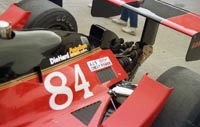 |
Why?
One of the biggest complications for Indycar designers, ever since the arrival of the Ford Cosworth DFX V8, was the fact that rules permitted the use of a single turbo. In Formula One it was common to use two smaller turbochargers on V-type engines to build up a more symmetric engine lay-out. But since the mid-seventies such was forbidden on Indycars. I have found reports of a single car ever being fitted with two turbos. That was Smokey Yunick’s entry in 1973, driven by Jerry Karl. That car was quite curious from a technical point of view. The Eagle chassis was common, but the engine was a Chevrolet stock block of 209ci, thus the single-cam and pushrod-operated valves technology from Detroit. Such engines had been tried before but this was their first time as a turbocharged version. And it was also the first-ever twin-turbo Indycar, yet also the last one.
Restricting the engine to a single turbo made it a challenge to obtain a smooth exhaust flow into the turbo and inlet plenum on a V-type engine. The old venerable Offenhauser four-banger had less such problems. In general, the turbo was located behind the engine. In the early days the turbo could be found behind the rear axle. In the mid-seventies it was more common to bring the turbo closer to the engine again if possible. (Reaction time.) Such was possible with the Offy, with the Ford/Foyt however, it never happened. With the arrival of the wing cars it became rather common to locate the turbo above the spacer between the engine and the gearbox. Eventually these spacers were made lower and lower in order to put the turbo as low as possible within the chassis. It was also common practice to have the exhaust turbine on the left side of the car and the compressor on the right side, with the air intake to the compressor also situated on the right side.
The next problem was related to the aerodynamics. It was preferred to have the exhaust flow released in a position in the car that blended it in nicely with the airstream around the engine cover, in order to not upset the airstream to the rear wing as much as possible.
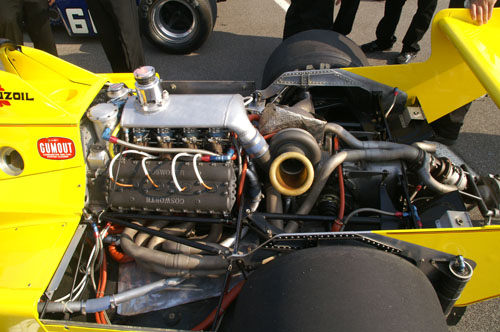
On Indy's first-ever full ground-effects car, the Chapparal-Cosworth 2K, it appears as if finding a suitable location and installation for the turbo was not that much of a problem. But getting the (single) wastegate installed, however, needed some creative thinking and required additional tubing.
This picture was taken on Race Day 2011, shortly before Johnny Rutherford did a lap of honour with the legendary Yellow Submarine in which he had won the race 31 years earlier. (photo HG)
The early Marches and Lolas had their exhaust exit located at the left side of the car but as close to the center as possible.
Rather different was the March 86C. Nearly every car of the eighties had its turbo inlet on the right side of the engine cover, behind the engine. The 86C however had a periscope behind the engine cover. The majority of 86Cs used this arrangement in 1986, but it wasn't always retained on cars used in later years. The 86C had been the first car on which twin wastegates (one for each bank of cylinders) had been used. But there had been some controversy about the waste pipes exiting at the edge of the sidepods, thus possibly providing an aerodynamic gain. It was permitted nonetheless.
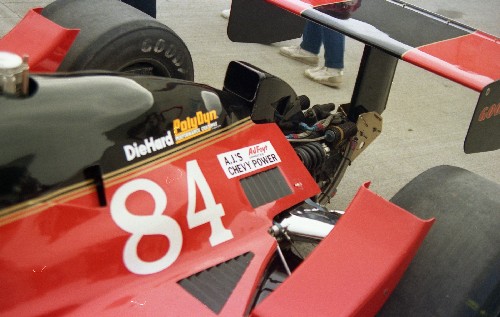
The air intake periscope on the 86C. This is the AJ Foyt Chevy V6 turbo-powered 86C, photographed in 1988. (photo HG)
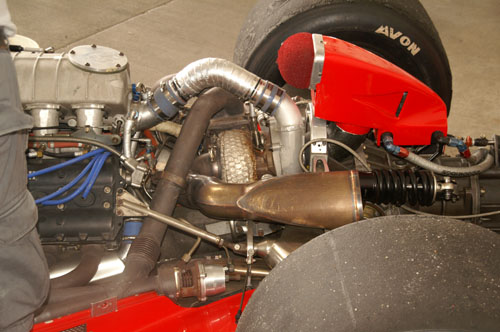
Underneath the engine cover, the 86C had its turbo installed longitudionally, the air entry facing backward, fed by the periscope right behind it. The exhaust flow had to make a full U-turn to be released backwards. It looks a bit unlogical at first sight but given the fact that 86Cs were fast enough to qualify for the 500 up until 1989 it must have been an effective solution nonetheless.
This is a 1986 Patrick Racing entry for Emerson Fittipaldi, photographed on May 13th 2011. The car was one of the veteran cars driven on the Speedway that day. (photo HG)
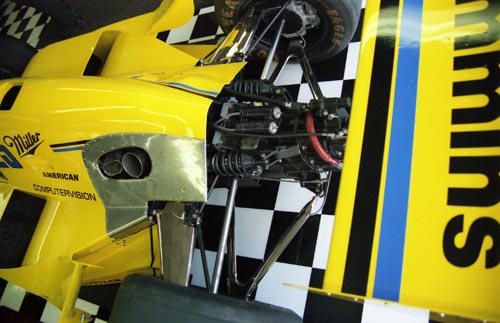

Not every team used the periscope on the 86C in 1986. The Penske entries never used them but had a different solution to get air into the turbo. This is how they solved that problem, seen on a replica of the winning car of 1987. I took these pictures in 1994 on Race Day when this car was part of a demo of Cummins powered and/or sponsored cars. According one of the men who took care for the car, this was not the real winner (that one is/was with Penske) but a replica, created on behalf of, and owned by Cummins for PR duties. (Photo HG)
Another arrangement was developed on the 1987 Lola T87/00 and the successors derived from this car, the ’88 T88/00 and ’89 T89/00. The flow out of the turbo was bent upwards and released at the end of the engine cover, just above the gearbox. The flow of the wastegate was released above this pipe. A very neat solution, resulting in a symmetric exhaust flow. A near similar arrangement was used on the 1989 Penske PC18. March never came with an entirely symmetric exhaust flow solution above the gearbox though several cars came fairly close.
Some pictures of the turbo locations as used on the Lola types T88/00 and T89/00:
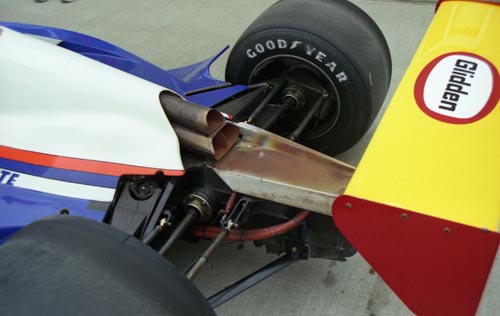
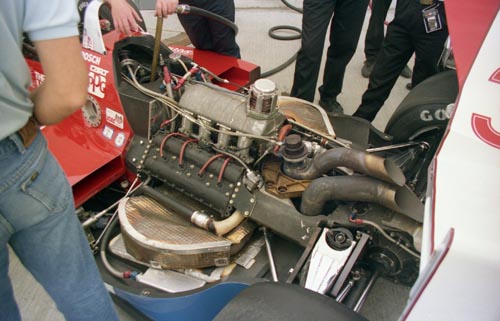
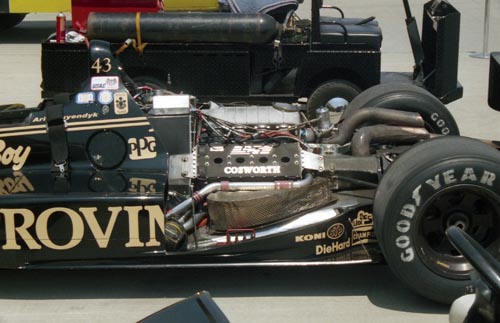
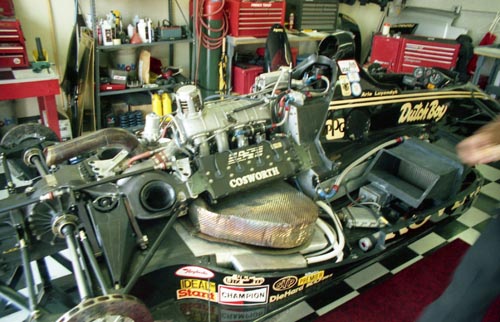

The gearbox-spacer combination on a Lola of the late eighties looked like this. The spacer accomodated the turbo. (photo HG)
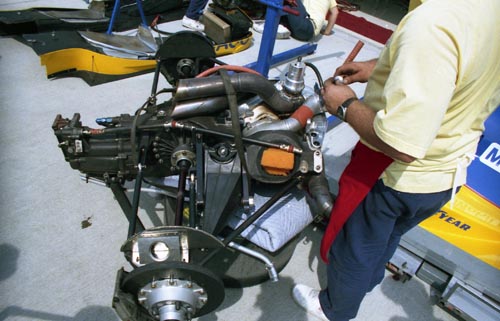
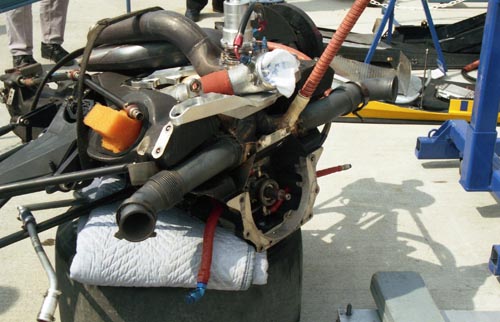
This is the gearbox-spacer unit of a T89/00, with turbo installed. (photo HG)
On pictures it appeared as if March went back to a single wastegate for the 87C and 88C. But such was not the case, at least on the Ilmor-powered versions. Look closely and you'll see three different pipes coming together, each bank of cylinders keeping its own wastegate. Here's an impression of how March installed the turbo in the 88C:

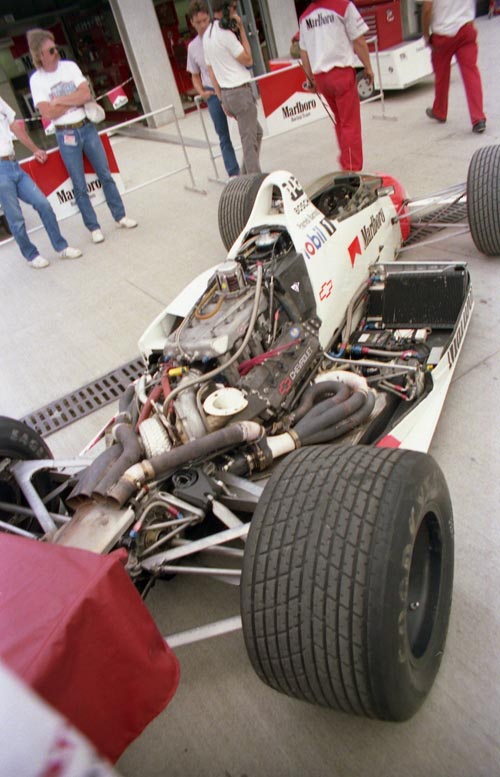


An idea of how the turbo was built into the Alfa Romeo-powered March 89CE can be given thanks to these pictures made available by Arjan de Roos and Johnny Capels:
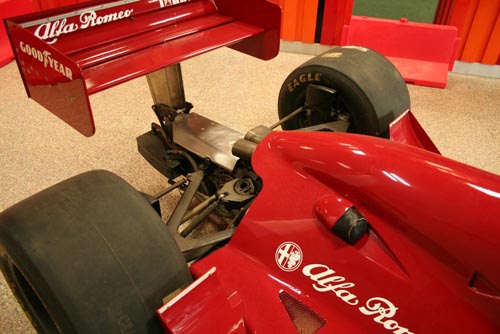
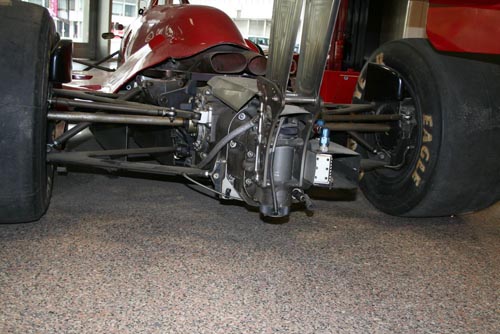
Derived from the 88C, the turbo localisation in the 89CE was much like that of the 88C. (photos courtesy Arjan de Roos)

A bit difficult to see but this picture does show enough of the turbo to get an indication how it was positioned in the 89CE.
(photo courtesy Johnny Capels)
As for the solution used on the type of car that won the race in 1989...
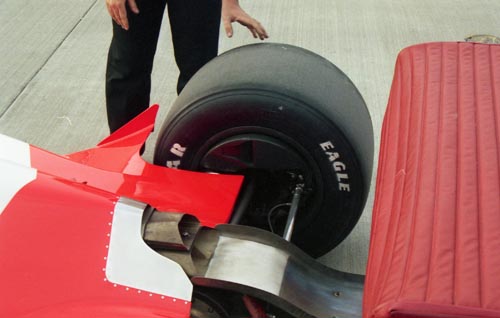
Given the fact that the Penske cars of 1988 and later were designed by designers and engineers taken over from Lola, it is not that strange that the 1989 Penske’s turbo lay-out is very similar to that of the Lola (Photo HG)
When the 1990 cars were ruled to have the height of their underwing profile reduced, it made much more sense lowering the entire sidepod to reduce the frontal area. This in return gave the engine cover a much higher profile compared to the older arrangement.
Lola came with a daring solution on the T90/00. Instead of trying to get the exhaust flow near the center of the car, the exhaust pipe out of the turbo wasn’t bent upwards but remained at the same horizontal level and was directed to the rear of the car. The pipe was widened but at the same time lowered so it fitted between the lower wishbone and the left driveshaft. The two exhaust pipes each got their own wastegate before entering the turbo. The flow out of the left-side waste pipes was released next to the exhaust. The waste pipe on the right side was released at a similar manner between the right lower wishbone and driveshaft. The fact that the the exhaust flow was not in the center of the car any longer appeared not to have been a problem on the Lola.
Without all the exhaust pipes above the spacer and gearbox it was possible to lower the profile of the end part of the engine cover quite a bit, giving the T90/00 a much lower profile compared to preceding designs, making them look bulky and dated. Compared with the solutions used on the March 90CA the turbo and exhaust arrangement of the Lola looked much neater and more thought over.
The Penske PC19 that was introduced that same year made use of a similar arrangement as that on the Lola T90/00. The Lola T90/00 turbo arrangement looked like this:
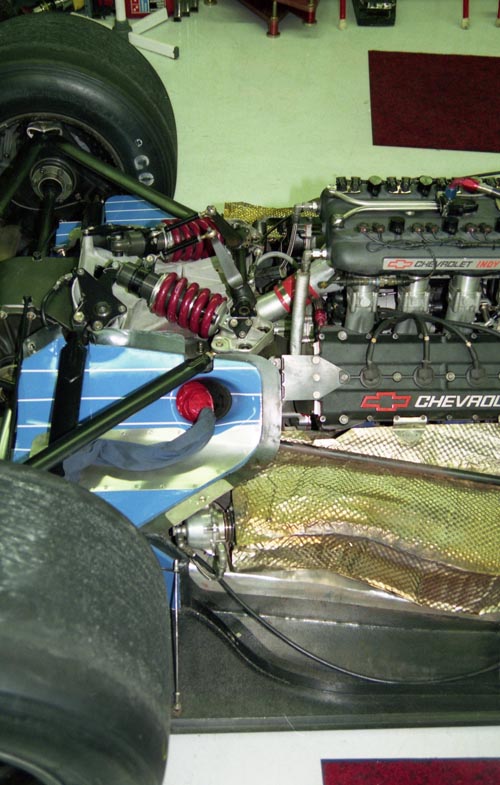
A T90/00 without its engine cover. The entry to the turbocharger is blocked to prevent small parts falling into the turbine. (photo HG)


The gearbox-spacer unit, the entry to the compressor is clearly visible (photo HG)
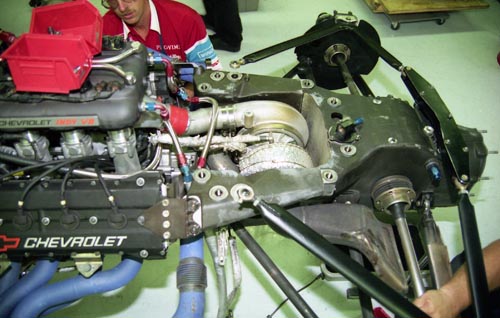
A view on the spacer-gearbox unit, the turbo clearly visible. Between the triangle of the suspension one can see the exhaust pipeout of the turbo. (photo HG)
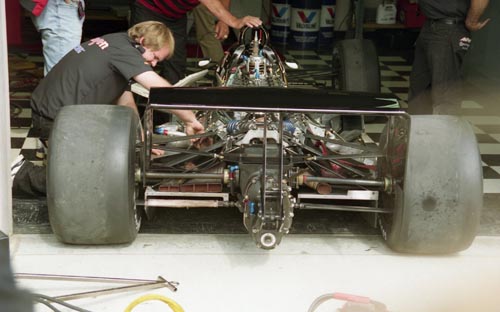
This was what you saw when looking at the rear of a Lola T90/00 (photo HG)

Team Penske made sure that you rarely saw a car without an engine cover. A look on the engine cover itself is the best approval that the 1990 Penske had about the same turbo and exhaust configuration as the 1990 Lola (photo HG)
The Porsche group within March came with an even more radical solution, as they relocated the turbo between the fuel tank and engine in the center of the car. The exhaust flow had to be released through a fairy short pipe alongside the engine cover. The March 90P however was born and created in a team in difficulties, troubled by a lot of politics because of its monocoque being intended to be built fully out of carbon fibre. The 90P never got the chance to show what it was capable of in the form it was intended to be built. Though the centrally located turbo has been critisized, it has also been told that, despite the unusual location, the exhaust flow above the left sidepod did not upset the handling of the car once some initial aerodynamic problems with the car were sorted out. The 90P had one advantage on its opponents. No other car had such a low, smooth engine cover.
The turbo and exhaust arrangement of the 90P appeared much more questionable on first sight then that of the 90CA. The glowing hot turbo sitting close to the fuel tank, hidden within the car, seemed like asking for the car set ablaze. But Porsche had it all well under control. This approach suggested by March engineers was indeed risky, yet innovative and creative. If it was a better solution then the one used on the 90CA remains an unanswered question.
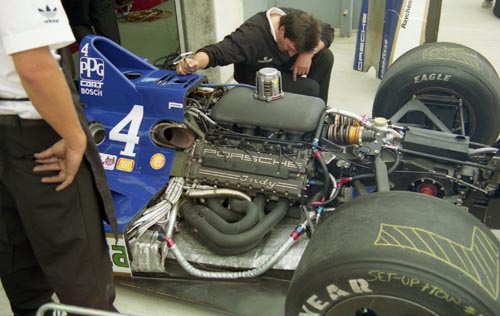
The radical March-Porsche 90P had its turbo in the center of the car. (photo HG)
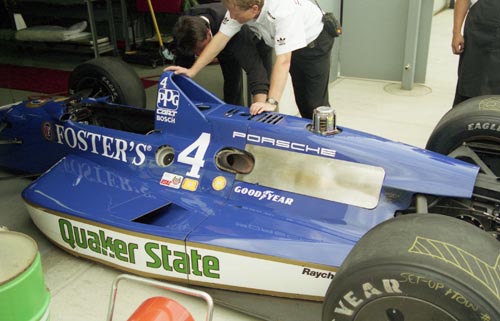
With bodywork installed the rear end of the 90P looked low, smooth and purposeful. (photo HG)
The designers of the Alfa Romeo-powered March 90CA followed the trend to discard the exhaust flow at the end of the left sidepod. But instead of using a wastegate for each bank of cylinders, the Alfa Romeo V8 had only one single wastegate control valve, located above the turbo. As a result the flow out of the wastegate was discarded above the sidepod bodywork, off center, at the left corner of the engine cover. With the pipe clearly visible sticking out of the engine cover, even on first sight it looked a much less elegant solution than the one used on the T87/00, T88/00 and T89/00 Lolas and even some of the elder March types.

The March 90CA. The exhaust tube visible in the center of the picture is only discarding the gasflow out of the wastegate. Now, look for the joining point of the upper triangle of the left rear suspension near the rear wheel. Right in the corner of that triangle you see a slightly oval-shaped tube exit with the same color of the wastegate exhaust. See it? Then you’ve found the exhaust position on the 90CA. (photo HG)
